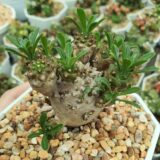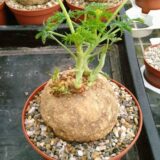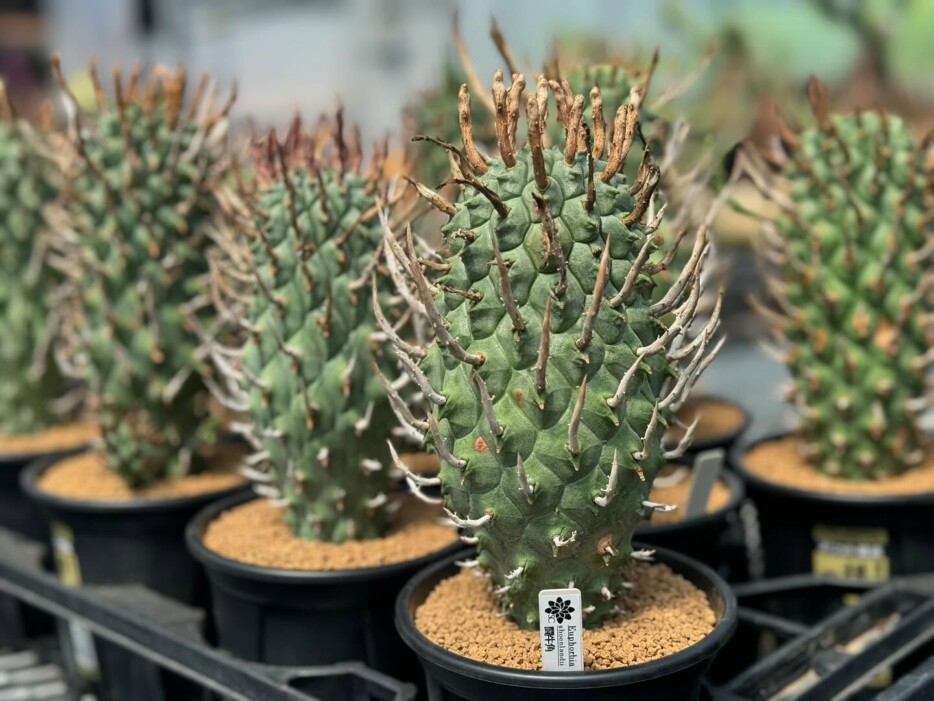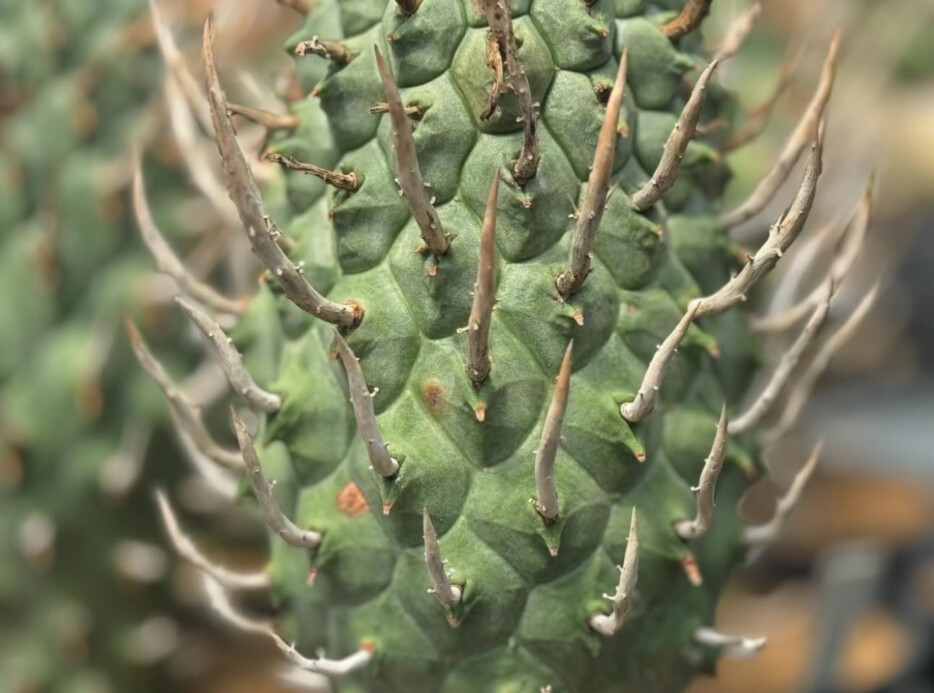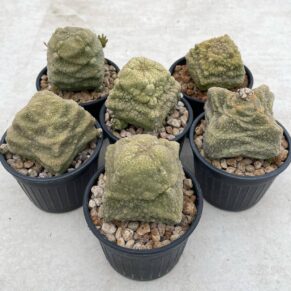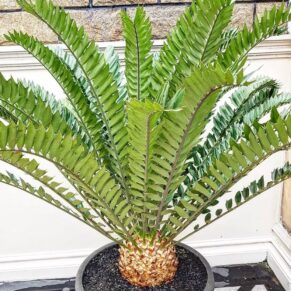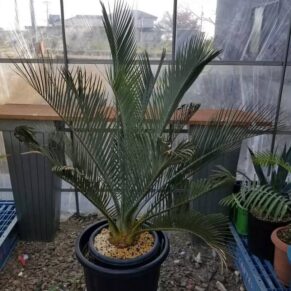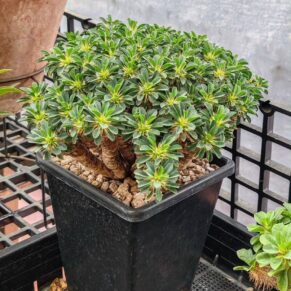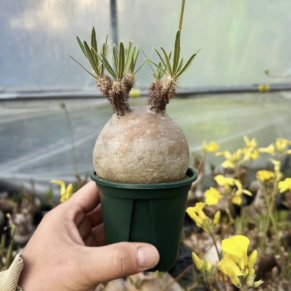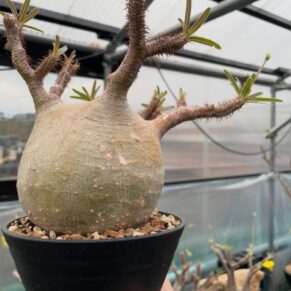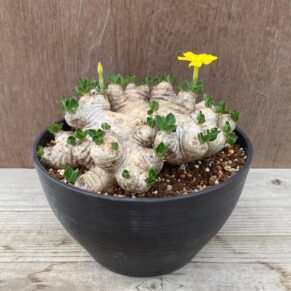- Your cart is empty
- Continue shopping
Introduction: Euphorbia schoenlandii – The Compass Barrelwort
Euphorbia schoenlandii, also known as the Compass Barrelwort or Compass Milkbarrel, is a captivating succulent from South Africa. With its cylindrical club-like stem, spiraling spines, and subtle directional orientation, it commands attention. Though low-growing, this plant is a sculptural marvel—ideal for enthusiasts who appreciate form, rarity, and botanical intrigue facebook caudexplants/succulents/cactus group
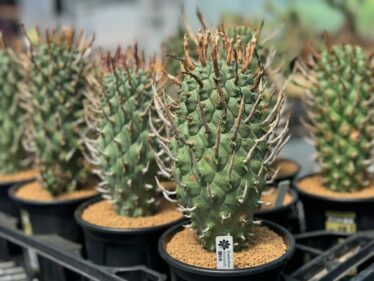
Botanical Overview & Natural Habitat
Native to the sandveld regions of South Africa’s western Cape—from Strandfontein to Kotzesrus—E. schoenlandii thrives on deep red aeolian sands and loamy slopes. Exposed to winter rains, summer droughts, and coastal fog, it evolved into a resilient form-shaper: single-stemmed, rigid, and heat tolerant instagram page.
This species is rare in the wild and considered sensitive due to its small range and risk from over-collection. It is now protected in its native range .shop euphorbia schoenlandii here
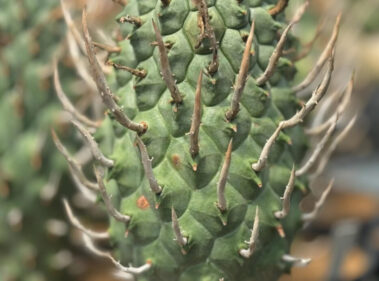
Appearance & Distinctive Features
-
Stem shape: Upright, club-shaped, sometimes exceeding 100 cm, though most cultivated specimens reach around 50 cm tall by 7.5 cm wide
-
Tubercles & spines: Conical, spirally arranged protuberances up to 12 mm long, each topped with a woody residue of a floral peduncle. These “spines” reach up to 5 cm and give a pine-cone-like texture Leaves: Minimal and short-lived lanceolate leaves emerge in growth periods, but drop quickly—leaving a bold sculptural silhouette
-
Flowers: Small cyathia appear at the stem apex in mid to late spring, followed by globose fruits and seeds that may pop upon drying
This compact minimalist architecture offers both intrigue and elegant simplicity:shop euphorbia schoenlandii here

Life Cycle & Growth Dynamics
Euphorbia schoenlandii is a slow-growing, long-lived species. In cultivation, it may take 5–8 years or more to reach flowering maturity. Growth follows a series of life phases: germination, seedling, vegetative growth, flowering, seed set— and eventual full maturity with stabilizing form and occasional bloom cycles
Adults can live up to 10 years or more, with steady moderate vertical growth balanced by wide survival capabilities:shop euphorbia schoenlandii here
Environmental Needs & Ideal Conditions
Light & Placement
It thrives in bright full sun. Indoors, place within one foot of a sunny south- or west-facing window. Outdoors it benefits from open exposure; young or shade-acclimated specimens must be hardened off slowly to prevent sunburn Substrate & Potting
A coarse mineral mix—such as cactus or succulent blend enhanced with pumice, coarse sand, or granite—is ideal. Avoid organic-rich soils. Use small pots with excellent drainage; oversized containers promote water retention and root issues. Repot sparingly, only when soil degrades or roots become bound Waterin:shop euphorbia schoenlandii here
Follow a soak-and-dry routine during growth: heavy watering when dry, then allow full drying before watering again. Water sparingly in dormancy: nearly dry in winter. Though more tolerant of moisture than some species, prolonged wet soil risks rot Temperature & Humidity
Ideal temperatures range from 15–30 °C; it may tolerate occasional drops to roughly −3 °C if kept dry. It resists heat well and handles coastal conditions but requires protection from sustained cold. Typical indoor humidity levels are acceptable; ventilation is helpful Nutrition
This plant thrives on minimal feeding. Weak diluted succulent fertilizer once or twice in active growth is sufficient. Most nutrition is best replenished by soil refresh every one to two years rather than regular feeding
Propagation & Development
From Seed
Seeds germinate in 7–14 days when lightly sown in a mineral mix at warm temperatures around 25 °C. Young seedlings require protection from sun and steady warmth. Flowering from seed may take several year.shop euphorbia schoenlandii here
From Cuttings
Cuttings may root effectively if allowed to callus fully before planting in dry substrate. Gloves are essential when handling due to toxic latex sap
Common Issues & Troubleshooting
-
Leaf loss or accelerated spines: May indicate improper lighting or watering. Increase bright light and adjust watering rhythm if growth stalls or green tips disappear prematurely
-
Rot symptoms: Softness, discoloration, or foul odor signal root problems—resolve by removing decay, repotting into fresh mix, and drying thoroughly.
-
Sun stress: Sudden exposure can bleach or burn; acclimate gradually after shade .
-
Pests: Rare but include mealybugs; blot sap contact and inspect periodically Reddit.
Quotes from growers affirm its show-stopping form:
“It is a small pickle shape, with prominent spiny tubercles… can grow up to 15–38 cm… takes 5–8 years to flower… eye catching… spiny thorns”
Handling & Safety
Every part exudes milky latex sap that is irritating and toxic. Skin contact may cause rash or blisters; eye exposure can lead to serious discomfort. Gloves and eye protection are essential when pruning or moving. Keep well away from pets or children
Styling & Display Ideas
This plant works beautifully in:
-
Minimalist pots with gravel or dark stone to showcase form contrast.
-
Rock gardens alongside other architectural succulents.
-
Terrarium trays or bonsai setups for botanical artistry.
-
Indoor windowsill accents to act as living sculpture—compact but striking.
Its directional orientation, unique ribbing, and sharp ridges offer visual drama in any curated desert or modern aesthetic.
Why This Plant Enhances caudexplants.com
-
Architectural rarity: A rare and sculptural spurge that stands apart in any collection.
-
Low care, high impact: Perfect for minimal-maintenance, high-visual collections.
-
Botanical story: Compass orientation, rare wild status, and slow thoughtfulness appeal to storytelling.
-
Collector appeal: Limited wild populations and sensitivity make it prized and meaningful.
-
Versatile display: Works as an indoor accent or outdoor rock garden focal, in containers or collections:shop euphorbia schoenlandii here
Frequently Asked Questions
-
When will it flower? Generally after 5–8+ years under good light and persistent care.
-
Why do green peduncles turn brown fast? That is natural: new growth tends to wither into woody spines as stems mature.
-
Can it go outside? Yes, in frost-free climates or with winter protection. It tolerates coastal conditions and sun, but avoid sudden exposure.
-
How often to repot? Only when soil is spent or roots are constricted—typically every two to three years.
-
Is propagation easy? Yes, via seed or cuttings. Cuttings need cautious sap-handling; seeds germinate easily but take time to mature.

Euphorbia schoenlandii

